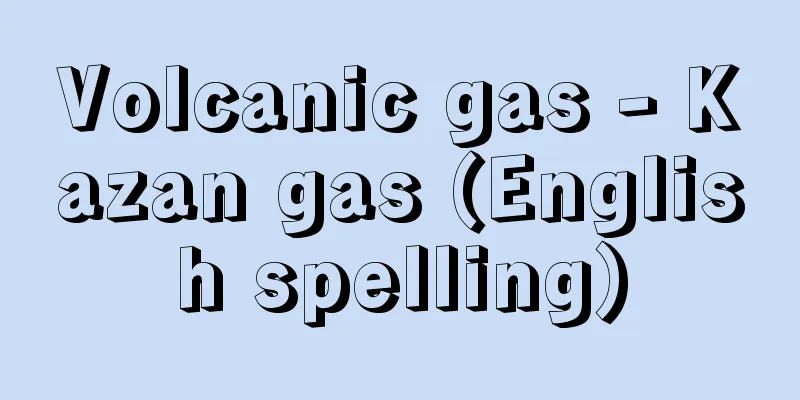Vorticity - Vortex

|
Generally, it refers to a rotational circulation around an axis, although the direction of the axis can be arbitrary. Mathematically, it refers to a vector defined by the following formula: q=∇×V=rotV=curlV Air particles are given the kinematic properties of translation, deformation, divergence, and rotation depending on the air flow. Furthermore, when air particles with these properties gather together, a corresponding unique flow pattern is formed. The actual air flow pattern is formed by a combination of these basic flow patterns. Air flow patterns are expressed by the spatial distribution of wind, and kinematic analysis of the wind field is important for diagnosing and predicting the physical structure of the atmosphere. Taking the example of a flow on a horizontal surface, in a field where the wind speed is increasing in the right direction perpendicular to the flow, the air particles flowing there have the tendency to rotate counterclockwise around the vertical axis, while in a field where the wind speed is increasing in the left direction, they have the tendency to rotate clockwise. The former is called positive vorticity, and the latter negative vorticity. Areas such as pressure troughs, low pressure areas, and the north side of the jet stream axis are areas of positive vorticity, while areas such as pressure peaks, high pressure areas, and the south side of the jet stream axis are areas of negative vorticity. Since wind is the movement of air relative to the Earth, the vorticity defined in the wind field is sometimes called relative vorticity. Since the Earth rotates around its axis once a day, the ground itself also has vorticity around the vertical axis at that point. This vorticity of the ground is equal to the Coriolis parameter (Coriolis factor) f, which is expressed by the following formula: f=2Ωsin Relative vorticity is a kinetic property given to air particles by the way air flows relative to the Earth (wind field), and changes quantitatively depending on latitude. Even with the same air flow, the relative vorticity is smaller at high latitudes and larger at low latitudes. This is called the latitude effect. However, the Coriolis factor is larger at higher latitudes, and absolute vorticity (f + ζ) behaves as if it is kept exactly constant, which is called the law of conservation of absolute vorticity. Tracking absolute vorticity allows for a more accurate analysis of air movement. Although the flow of air is horizontal, it has a vertical component (vertical flow). If the speed of the vertical flow differs in the horizontal direction, it is given a rotational property around the horizontal axis (horizontal vorticity). If this horizontal axis is tilted by the vertical flow, a rotational property occurs around the vertical axis, which affects the relative vorticity (vertical vorticity). This is called the rising effect. By the way, as can be seen from the fact that figure skaters draw their arms together (convergence) when spinning and spread their arms apart (divergence) when stopping, the relative vorticity increases when it is given a convergent property, and decreases when it is given a divergent property. In this way, convergence and divergence have a large effect on the relative vorticity, so this is called the divergence effect. In addition, in a baroclinic atmosphere, solenoid circulation affects the relative vorticity, so this is called the solenoid effect. In this way, the relative vorticity of air particles changes due to the latitude effect, divergence effect, rising effect, and solenoid effect. The equation that mathematically expresses the time change in the relative vorticity of air particles is called the vorticity equation, which is derived from the equation of motion in fluid mechanics. Of these effects, the rising effect and baroclinic effect are relatively small, so the physical quantity that mathematically incorporates only the latitude effect and divergence effect, which have a large influence, into the relative vorticity is highly conserved, and is called absolute potential vorticity or simply potential vorticity. Since potential temperature is highly conserved due to adiabatic changes in dry air, the movement of air around synoptic-scale disturbances can be analyzed more accurately by tracking the potential vorticity on an isentropic surface weather chart instead of an isobaric surface weather chart at altitudes of 5 kilometers or more, where there is relatively little water vapor. [Hiroshi Matano] "Vortices: Natural Vortices and Vortices in Engineering" by Hans J. Lugt, translated by Yamaguchi Nobuyuki and supervised by Ohashi Hideo (1988, Asakura Shoten)" ▽ "New edition of Fluid Mechanics by Imai Isao (1993, Iwanami Shoten)" ▽ "Fluid Mechanics edited by Kanbe Tsutomu (1995, Shokabo)" ▽ "Atmospheric Movement and Dynamics for Weather Forecasting" by Matano Hiroshi (1997, Tokyodo Publishing)" ▽ "General Meteorology, 2nd Edition by Ogura Yoshimitsu (1999, University of Tokyo Press)" [References] | | | | | | | | | |Source: Shogakukan Encyclopedia Nipponica About Encyclopedia Nipponica Information | Legend |
|
一般的には軸の周りの回転性循環をいう。ただし、軸の方向は任意である。数理的には、次の式で定義されるベクトルをいう。 q=∇×V=rotV=curlV 空気粒子は、空気の流れ方によって平行移動、変形、発散および回転の運動学的性質を与えられる。また、これらの性質をもった空気粒子が集まると、それに対応した固有の流れ方が形成される。実際の空気の流れ方は、これらの基本的な流れ方が複合して形成される。空気の流れのようすは風の空間分布によって表されるが、風の場の運動学的解析は大気の物理的構造の診断と予想にとって重要である。 いま、水平面上の流れについて例をとると、流れに直角な右方向に風速が増している場では、そこを流れる空気粒子はその鉛直軸の周りに反時計方向に、一方、左方向に風速が増している場では、時計方向に回転する性質が与えられる。前者を正の渦度、後者を負の渦度という。気圧の谷、低気圧域、ジェット気流の軸の北側などでは正の渦度域となり、一方気圧の峰、高気圧域、ジェット気流の軸の南側などでは負の渦度域となっている。 風は地球に相対的な空気の運動であるから、風の場で定義される渦度を相対渦度とよぶことがある。地球は地軸の周りを1日に1回転しているので、地面自体もその地点の鉛直軸の周りの渦度をもつ。この地面のもつ渦度は次の式で表されるコリオリ・パラメーター(コリオリ因子)fに等しい。 f=2Ωsin 相対渦度は、地球に相対的な空気の流れ方(風の場)によって空気粒子に与えられる運動学的性質であり、緯度によって量的に変化する。同じ空気の流れ方でも相対渦度は高緯度で小さく、低緯度で大きくなる。これを緯度効果という。しかし、コリオリ因子は高緯度ほど大きく、絶対渦度(f+ζ)はちょうど一定に保たれるようにふるまうので、これを絶対渦度保存の法則という。絶対渦度を追跡すると空気の運動をより正しく解析することができる。 大気の流れは水平的であるが、鉛直成分(鉛直流)をもっている。その鉛直流の速さが水平方向に違うと水平軸の回りに回転の性質(水平渦度)が与えられる。この水平軸が鉛直流によって傾くと鉛直軸の回りに回転の性質が生じて相対渦度(鉛直渦度)に影響を与える。これを立ち上がり効果という。ところで、フィギュアスケーターがスピンをかけるときは両手を縮め(収束)、止まるときは両手を広げる(発散)ことからわかるように、相対渦度は収束の性質を与えられると増加し、発散の性質を与えられると減少する。このように、収束と発散は相対渦度に大きな影響を与えるので、これを発散効果という。また、傾圧大気ではソレノイドによる循環が相対渦度に影響を与えるので、これをソレノイド効果という。このように、空気粒子の相対渦度は緯度効果、発散効果、立ち上がり効果、ソレノイド効果によって変化する。この空気粒子の相対渦度の時間的変化を数学的に表現した式を渦度方程式といい、流体力学の運動方程式から導かれる。 これらの効果のなかで、立ち上がり効果と傾圧効果は比較的小さいので、影響の大きい緯度効果と発散効果のみを数理的に相対渦度に組み入れた物理量は保存性が強く、これを絶対渦位または単に渦位という。温位は乾燥大気の断熱変化に保存性が強いので、比較的水蒸気量の少ない5キロメートル以上の高層で等圧面天気図にかえて等温位面天気図上で渦位を追跡すると総観規模擾乱(じょうらん)を巡る空気の運動をより正確に解析することができる。 [股野宏志] 『ハンス・J・ラグト著、山口信行訳、大橋秀雄監訳『渦――自然の渦と工学における渦』(1988・朝倉書店)』▽『今井功著『流体力学』新装版(1993・岩波書店)』▽『神部勉編著『流体力学』(1995・裳華房)』▽『股野宏志著『天気予報のための大気の運動と力学』(1997・東京堂出版)』▽『小倉義光著『一般気象学』第2版(1999・東京大学出版会)』 [参照項目] | | | | | | | | | |出典 小学館 日本大百科全書(ニッポニカ)日本大百科全書(ニッポニカ)について 情報 | 凡例 |
Recommend
Fruit drink - Kajitsuinryo
Beverages made from squeezed fruit juice. The Japa...
Silver screen
(Noun) (named after the fact that it is painted wi...
Pasig River (English spelling)
A river that crosses Manila from east to west in s...
REM sleep
…(1) Sleep stages There are two types of sleep: n...
Black soil
〘 noun 〙① Black soil. Kuroboku. Kuroboko. [Wamyosh...
JR Soren - JR Soren
Its official name is the All Japan Railway Workers...
Scutellaria brachyspica (English spelling) Scutellaria brachyspica
…[Murata Gen]. … *Some of the terminology that me...
Lounge suit
… The origins of the suit are said to date back t...
School
…It was invented by Laban. In 1928, Laban publish...
Alsatia - Alsatia
...The Vosges Mountains range from 300-400 metres...
Ismailia - Ismailia (English spelling)
A port city located at the midpoint of the Suez C...
Parishioners - Danka
A family that permanently requests a specific tem...
Einem
Austrian composer. Born in Bern, Switzerland, he w...
vibrato
A musical term. It refers to the repeated slight f...
Transport - Isou
When a lawsuit is pending in a court, it means tha...









